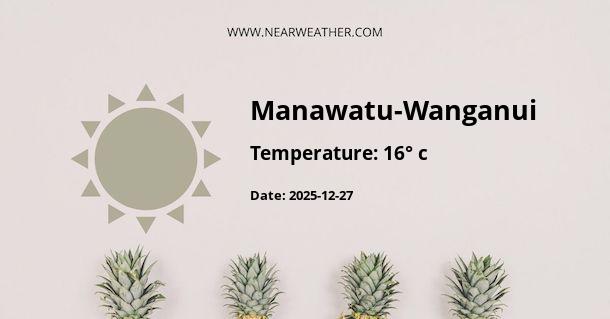Climate and Weather in Manawatu-Wanganui, New Zealand
Manawatu-Wanganui, located on the North Island of New Zealand, experiences a temperate climate with distinct seasons throughout the year. The region encompasses diverse landscapes, including the Manawatu Plains, the Tararua Range, and the Whanganui River, offering a range of weather patterns and microclimates.
Temperature
The average temperature in Manawatu-Wanganui varies depending on the season. Summers are generally warm, with temperatures ranging from 20 to 25 degrees Celsius (68 to 77 degrees Fahrenheit). The hottest months are typically January and February, where temperatures can occasionally reach up to 30 degrees Celsius (86 degrees Fahrenheit).
Winter in Manawatu-Wanganui brings cooler temperatures, with average highs ranging from 11 to 15 degrees Celsius (52 to 59 degrees Fahrenheit). The coldest months are usually June and July, where temperatures can drop to around 5 degrees Celsius (41 degrees Fahrenheit) during the night.
It's important to note that temperatures can vary depending on the specific location within the region, with higher altitudes experiencing cooler temperatures.
Rainfall
Manawatu-Wanganui experiences a relatively high amount of rainfall throughout the year. The region receives an average annual rainfall of around 1,200 to 1,400 millimeters (47 to 55 inches). The wettest months are typically from May to August, with July being the rainiest month.
The Tararua Range, located in the western part of the region, acts as a barrier for prevailing westerly winds, resulting in higher rainfall on the western slopes. The eastern side of the region, including the Manawatu Plains, tends to be drier due to the rain shadow effect caused by the mountains.
It's worth mentioning that rainfall patterns can vary within the region, with coastal areas experiencing less rainfall compared to the inland areas.
Sunshine Hours
Manawatu-Wanganui enjoys a relatively moderate amount of sunshine throughout the year. The region receives an average of around 2,000 to 2,200 sunshine hours annually. The sunniest months are typically from December to February, with February having the highest number of sunshine hours.
However, it's important to note that weather conditions can change rapidly in New Zealand, and it's always advisable to check the local forecast for the most up-to-date information.
Extreme Weather Events
Like many regions in New Zealand, Manawatu-Wanganui is prone to occasional extreme weather events. These can include heavy rainfall, strong winds, and even the possibility of tornadoes.
In recent years, the region has experienced severe weather events such as the Manawatu floods in 2004 and 2015, which caused significant damage to infrastructure and property.
Microclimates
Manawatu-Wanganui is known for its diverse landscapes, which contribute to the presence of microclimates within the region. The Tararua Range, for example, creates a unique climate on its western slopes, with higher rainfall and cooler temperatures compared to the eastern side.
The Whanganui River, the longest navigable river in New Zealand, also influences the climate in the surrounding areas. The river valley experiences milder temperatures and lower rainfall compared to the mountainous regions.
Conclusion
Manawatu-Wanganui, New Zealand, offers a temperate climate with distinct seasons and a moderate amount of sunshine throughout the year. The region experiences warm summers and cool winters, with average temperatures ranging from 20 to 25 degrees Celsius (68 to 77 degrees Fahrenheit) in summer and 11 to 15 degrees Celsius (52 to 59 degrees Fahrenheit) in winter.
Rainfall is relatively high, with an average annual precipitation of around 1,200 to 1,400 millimeters (47 to 55 inches). The region experiences a range of microclimates due to its diverse landscapes, with higher rainfall on the western slopes of the Tararua Range and milder temperatures in the Whanganui River valley.
While Manawatu-Wanganui is prone to occasional extreme weather events, such as heavy rainfall and strong winds, it remains a beautiful and diverse region to explore. Whether you're interested in outdoor activities, cultural experiences, or simply enjoying the stunning scenery, Manawatu-Wanganui has something to offer throughout the year.
A - Manawatu-Wanganui's Latitude is -39.950001 & Longitude is 175.016663.
A - Weather in Manawatu-Wanganui is 15° today.
A - Climate Conditions in Manawatu-Wanganui shows few clouds today.
A - Humidity in Manawatu-Wanganui is 54% today.
A - Wind speed in Manawatu-Wanganui is 30.78 km/h, flowing at 279° wind direction. today.
